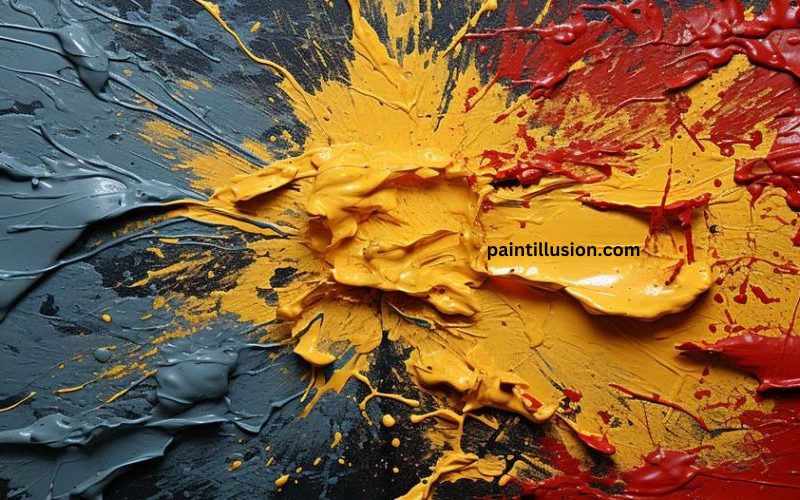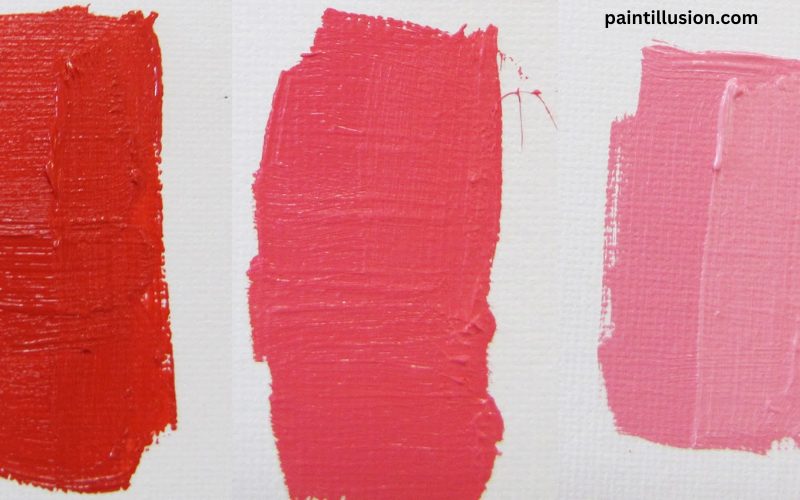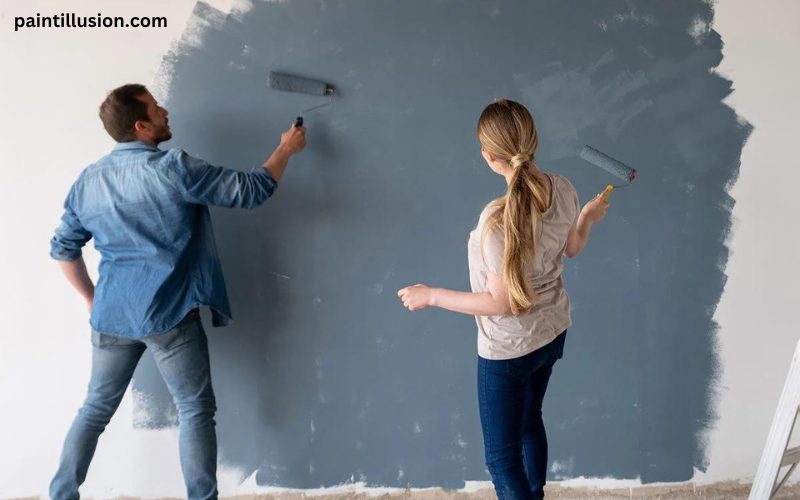Painting is a common task that most homeowners undertake at some point. Whether you’re giving your walls a fresh coat of paint or working on a DIY project, one question that often arises is, “Does paint dry darker or lighter?” Understanding the drying process of paint is crucial to achieving the desired color and avoiding any surprises once the paint is dry.
When paint is wet, it appears darker than its true color. This is because the wet paint has a higher level of transparency, allowing more light to pass through and reflect off the surface below. As the paint dries, the liquid evaporates, and the pigments in the paint start to come together, resulting in a more opaque finish. This transition from wet to dry can affect the overall appearance of the paint.
Factors that can affect the appearance of dried paint
Several factors can influence the appearance of dried paint. One of the most significant factors is the type and quality of the paint itself. Different brands and formulations of paint can have varying levels of pigmentation, which can impact how the color appears once the paint is dry. Additionally, the surface being painted can also affect the final color. A porous surface, such as bare wood or drywall, may absorb some of the paint, leading to a slightly lighter or duller finish.
Another crucial factor to consider is the thickness of the paint application. If you apply multiple thin coats of paint, the color may appear lighter compared to a single, thick coat. This is because each layer of paint adds to the overall opacity, resulting in a darker final color. Additionally, the color of the surface beneath the paint can also influence the appearance. A white base coat will enhance the vibrancy of lighter colors, while a darker base coat may make the final color appear deeper or more intense.

Does paint dry darker or lighter? The science behind it
The science behind whether paint dries darker or lighter lies in the interaction between light and the pigments in the paint. When light hits an object, it is either absorbed or reflected. In the case of paint, the pigments present in the paint determine how much light is absorbed and how much is reflected back to our eyes. When the paint is wet, the light passes through the liquid and reflects off the surface below, causing the paint to appear darker. As the paint dries, the liquid evaporates, and the pigments start to come together, creating a more opaque layer that reflects more light. This transition from a translucent liquid to an opaque solid is what makes the paint appear lighter once it is dry.
Common misconceptions about paint drying
There are several common misconceptions about paint drying that can lead to confusion. One misconception is that paint always dries darker. While it is true that wet paint appears darker than its true color, the final color when dry can vary depending on the factors mentioned earlier, such as the type of paint, the surface being painted, and the thickness of the application.
Another misconception is that all paint colors dry at the same rate. In reality, different pigments can have varying drying times. For example, some darker pigments may take longer to dry compared to lighter ones. It’s essential to follow the manufacturer’s instructions regarding the recommended drying time for the specific paint you are using to ensure the best results.
How different types of paint can behave when drying
Different types of paint can behave differently when it comes to drying. Oil-based paints, for instance, tend to dry slower compared to water-based paints. This slower drying time can affect the color perception, as the paint will appear darker for a more extended period before reaching its true color. Additionally, oil-based paints have a higher level of sheen when dry, which can further affect the overall appearance of the paint.
Water-based paints, on the other hand, dry relatively quickly. While they may appear lighter when wet, they tend to reach their true color faster than oil-based paints. Latex paints, a type of water-based paint, are commonly used for interior walls and ceilings due to their fast drying time and ease of use.
Tips for achieving the desired color after paint dries
To ensure you achieve the desired color after the paint dries, here are some tips to keep in mind:
- Test the color: Before committing to painting an entire wall or room, it’s advisable to test the paint color on a small, inconspicuous area. This will give you a better idea of how the paint will look once it’s dry and allow you to make any necessary adjustments before proceeding.
- Follow the manufacturer’s instructions: Different paint brands and formulations may have specific guidelines for achieving the desired color. Be sure to read and follow the manufacturer’s instructions regarding the recommended number of coats, drying time, and any other relevant information.
- Consider the lighting conditions: Lighting can significantly influence the perception of dried paint. Natural light and artificial light sources can have different color temperatures, which can impact how the paint color appears. It’s a good idea to view the dried paint in various lighting conditions to get a comprehensive understanding of its true color.

Can lighting conditions influence the perception of dried paint?
Lighting conditions can indeed influence the perception of dried paint. As mentioned earlier, different light sources have different color temperatures. Natural daylight tends to have a higher color temperature, while incandescent or warm white artificial light has a lower color temperature. These variations in color temperature can cause the same paint color to appear slightly different under different lighting conditions.
To ensure you get an accurate representation of the paint color, it’s best to view the dried paint in the same lighting conditions in which it will be seen regularly. This will give you a better understanding of how the paint will look day-to-day and help avoid any surprises once the project is complete.
How to properly test paint samples before making a decision
Testing paint samples before making a final decision is a crucial step in the painting process. Here’s a step-by-step guide on how to properly test paint samples:
- Prepare the surface: Ensure the surface is clean, dry, and free from any existing paint or coatings. If necessary, sand the surface lightly to create a smooth and even base.
- Apply the samples: Using a brush or roller, apply a small amount of each paint sample to the prepared surface. It’s best to apply at least two coats to ensure an accurate representation of the final color.
- Allow drying time: Follow the manufacturer’s instructions regarding the recommended drying time for the paint samples. This will give you a better idea of how the paint will look once fully dry.
- Evaluate the samples: Once the samples are dry, evaluate them under the lighting conditions in which they will be seen regularly. Pay attention to how the color appears in different lighting and how it complements the surrounding elements in the room.
- Make your decision: Based on your evaluation, choose the paint sample that best matches your desired color and overall aesthetic. Remember to consider factors such as the type of paint, the surface being painted, and any other relevant considerations.
Professional insights and advice on paint drying
To gain further insights into the drying process of paint, we reached out to professional painters and color experts. Here are some of their valuable insights and advice:
- Allow for color shift: According to professional painters, it’s important to account for a slight color shift when choosing paint colors. The true color of the paint may not be apparent until it is fully dry, so it’s advisable to select a shade slightly lighter than your desired final color.
- Use color swatches: Color swatches can be a helpful tool in visualizing how the paint will look in your space. Many paint manufacturers offer color swatches or sample pots that allow you to test the color on your walls before committing to a larger quantity.
- Consult a professional: If you’re unsure about the drying process or need assistance in choosing the right paint color, consulting a professional painter or color expert can provide valuable guidance. They have the experience and knowledge to help you achieve the desired result and avoid any potential pitfalls.
Conclusion
Understanding the drying process of paint is essential for achieving the desired color and avoiding any surprises once the paint is dry. While wet paint appears darker than its true color, the final appearance can be influenced by factors such as the type of paint, the surface being painted, and the thickness of the application. It’s important to test paint samples, consider lighting conditions, and consult professionals when necessary. By following these guidelines, you can ensure a successful paint job with the desired color outcome. So, the next time you ask yourself, “Does paint dry darker or lighter?” remember that the science behind it is a fascinating interplay between light and pigments.


Great article and straight to the point. I don’t know if this is really the best place to ask but do you guys have any ideea where to employ some professional writers? Thank you 🙂